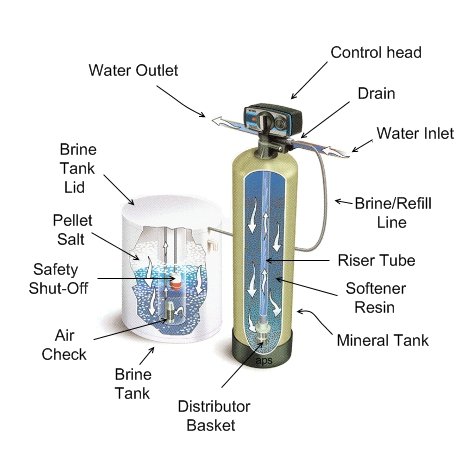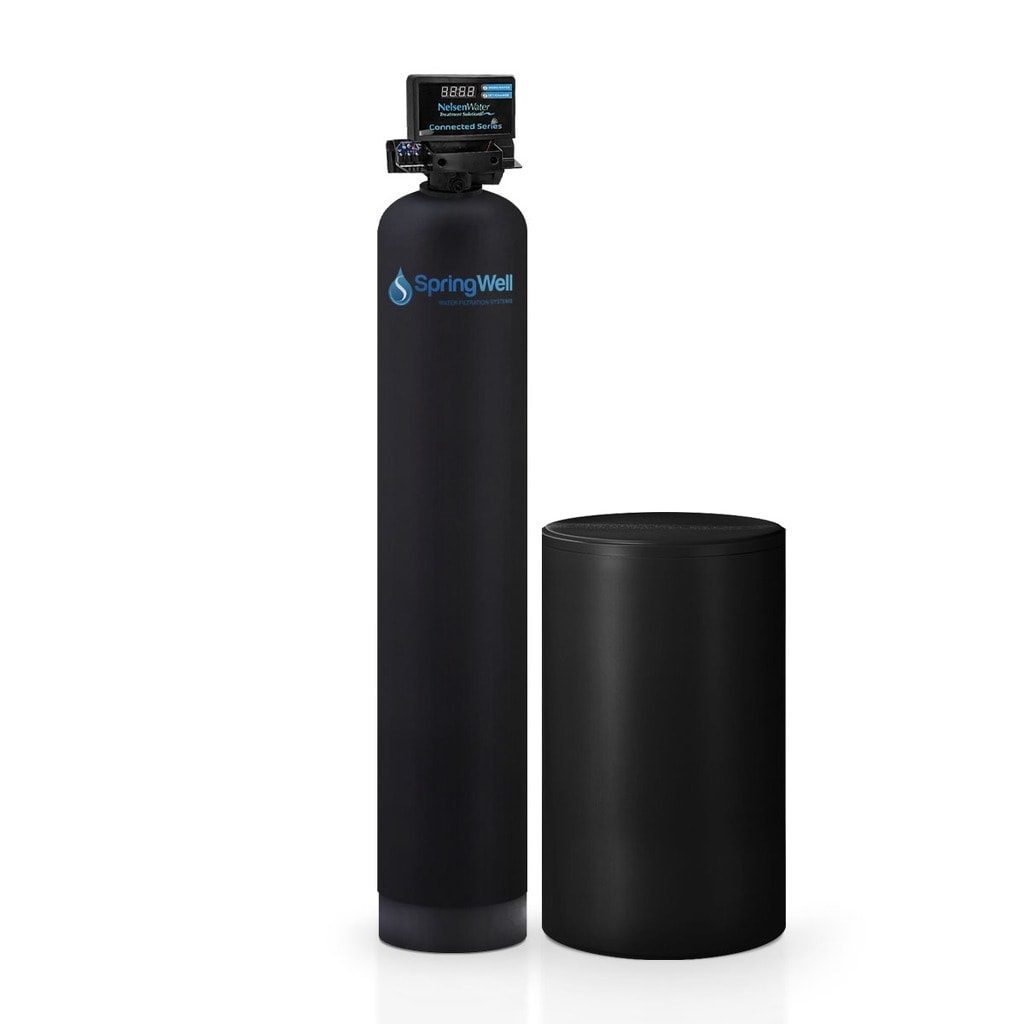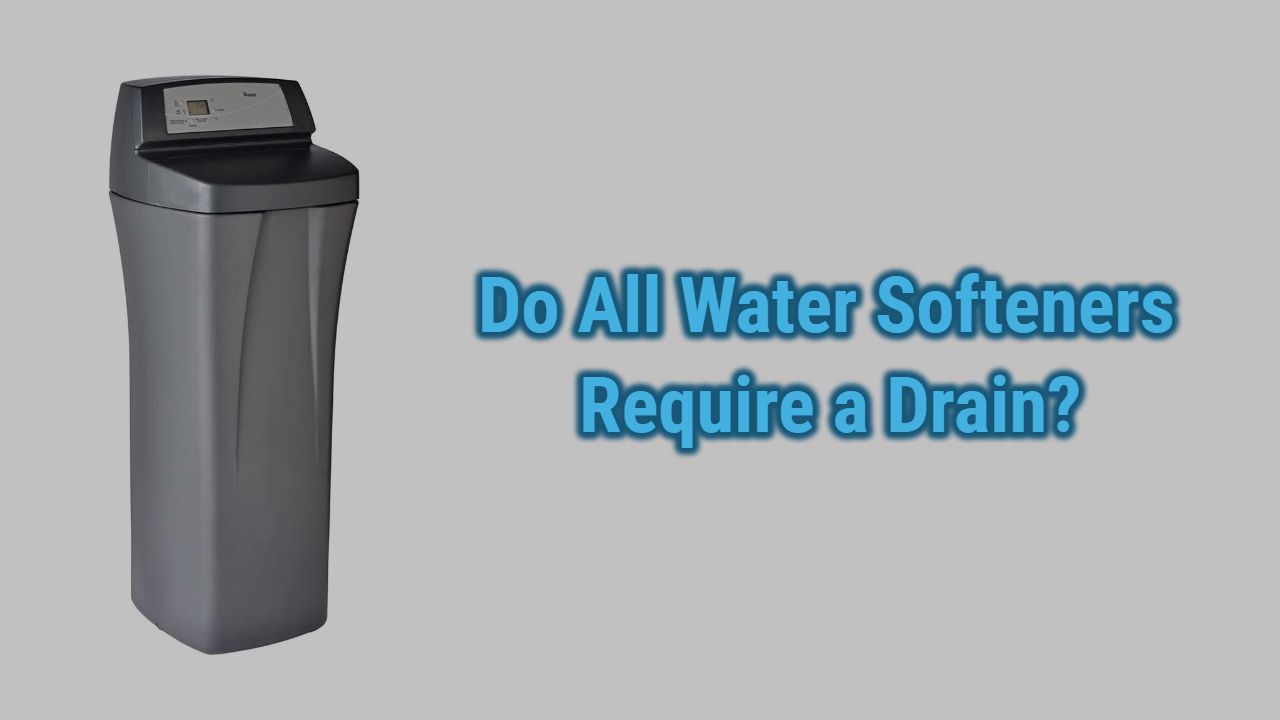Having hard water at your household or premises is a bad experience and troublesome. Generally speaking, water can become dirty in many ways, and it could hamper your drinking and other usage habits.
Whenever your water is dirty or hard, using a water softener will remove substances and make the water soft.
High mineral content in water is termed hard water. And to remove this, a water softener is needed. Please note that a water softener is not a filter; it is just a water softening system using an ion-based exchange mechanism.
This article will be focused on Water Softener draining systems. How does softener drain the water, what all draining containers are used? Why is softener draining and wasting water? How it is done. All these questions and confusions, we will try to resolve.
Table of Contents
What is a Water Softener?

Primarily, a water softener is used to remove high mineral contents like calcium and magnesium from water. By removing these hard water minerals, the water becomes soft and fit for drinking.
Generally, a softener uses sodium and potassium to make the water soft. The softener uses the ion-exchange method.
Does a water softener need a drain?
It is necessary for a water softener to have a drain pipeline for discharging water. For every water is softened by the water softener, a certain amount of water has to be discharged through the drain pipeline.
Wastewater draining is an important function of a softener as well as a reverse osmosis filter.
If you don’t have a drain pipeline or you are not willing to have a drain line, then your softener will encounter problems and issues and also the water will overflow all over your place. You will also face a water line issue, thus destroying your water.
These are a few of the major issues with not having a draining pipe. So, it is essential to have a draining pipeline or saddle for wastewater discharge.
Types of drains required in a water softener?
- Floor drain outlet– usually the most common draining method. Nothing new is added; the draining pipeline is directly connected to the floor drain outlet; thus, the discharged water goes out.
- Utility sink/tray/tub– Any type of container is kept near to the water softener draining pipeline, so the wastewater which is discharged goes to the sink or tray. This tray can act as a multi-purpose and can be used for other work as well.
- Plumbing trap outlet– in this, you will need a whole direct pipeline for draining the water. The plumbing pipe is connected to the softener and taken far out where the wastewater is discharged.
Types of water softeners?

- Salt-based ion-exchange systems– Salt is used to remove heavy minerals using an ion-exchange method
- Salt-free softener systems– In practice it is called water conditioners, they don’t remove heavy minerals but stop them from entering the water, surfaces etc
- Dual tank softener systems– Two tanks are used; while one resin tank is regenerating water, the other is available to provide the soft water.
Advantages of having a draining pipeline in a water softener
- The waterline of your softener will not be choked and clogged
- Letting your water softener Discharge wastewater feely makes your system healthy and workable for long
- A softener cannot function well without discharging your water; hence it is necessary
- Having a connected drain pipeline/saddle helps the water from overflowing and wetting your environment
Where can you drain your discharged water in a softener?
- You can connect the pipe to the floor drain outlet
- If you have the facility and connections, you can connect the drain pipeline to the sewer tank
- You can also connect the pipe all the way to your public drain pipe or backyard, where the water will be discharged
Conclusion
No matter if it is a water softener or a reverse osmosis filter system, you will need a daring pipeline outlet for both. Having a draining pipe for discharging the wastewater is very crucial for a softener to function as expected.
If you avoid installing or connecting a drainpipe/saddle, then be ready to face problems like water overflow, waterline problems, choking issues and so forth.
I hope we have given you all the possible things related to the softening draining problems, issues, benefits and other requirements. We have tried to make the information dispersing very simple and easy to understand.
Different parts are explained part-wise for better understanding. Hope you liked it. At the end of this article, we will be adding FAQs for a quick and easy guide for our readers and viewers.
Frequently Asked Questions (FAQs)
Question- Is it necessary to have a draining pipeline?
Answer– Yes. It is necessary to have a daring pipeline for discharged water to pass out.
Question- Can a softener work without a draining pipe?
Answer– Yes, it can work, but you will face water overflow issues, your system may not function as expected.
Question- How often does a water softener drain?
Answer– It depends on how much water you are using. An efficient water softener will drain wastewater every 3 days. If your softener is old, draining will be more frequent.
Question- Can I drain water outside or in nearby areas?
Answer– It will totally depend on your local laws and environment.
Question- Is the draining method different for different softeners?
Answer– Yes, it will totally depend on the design and brand you are using.
